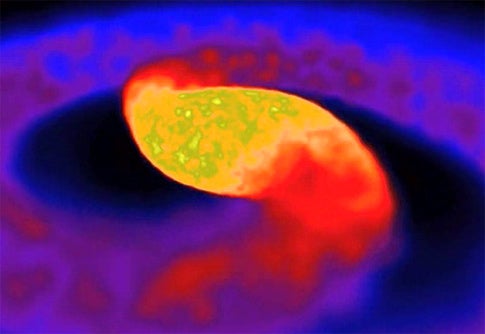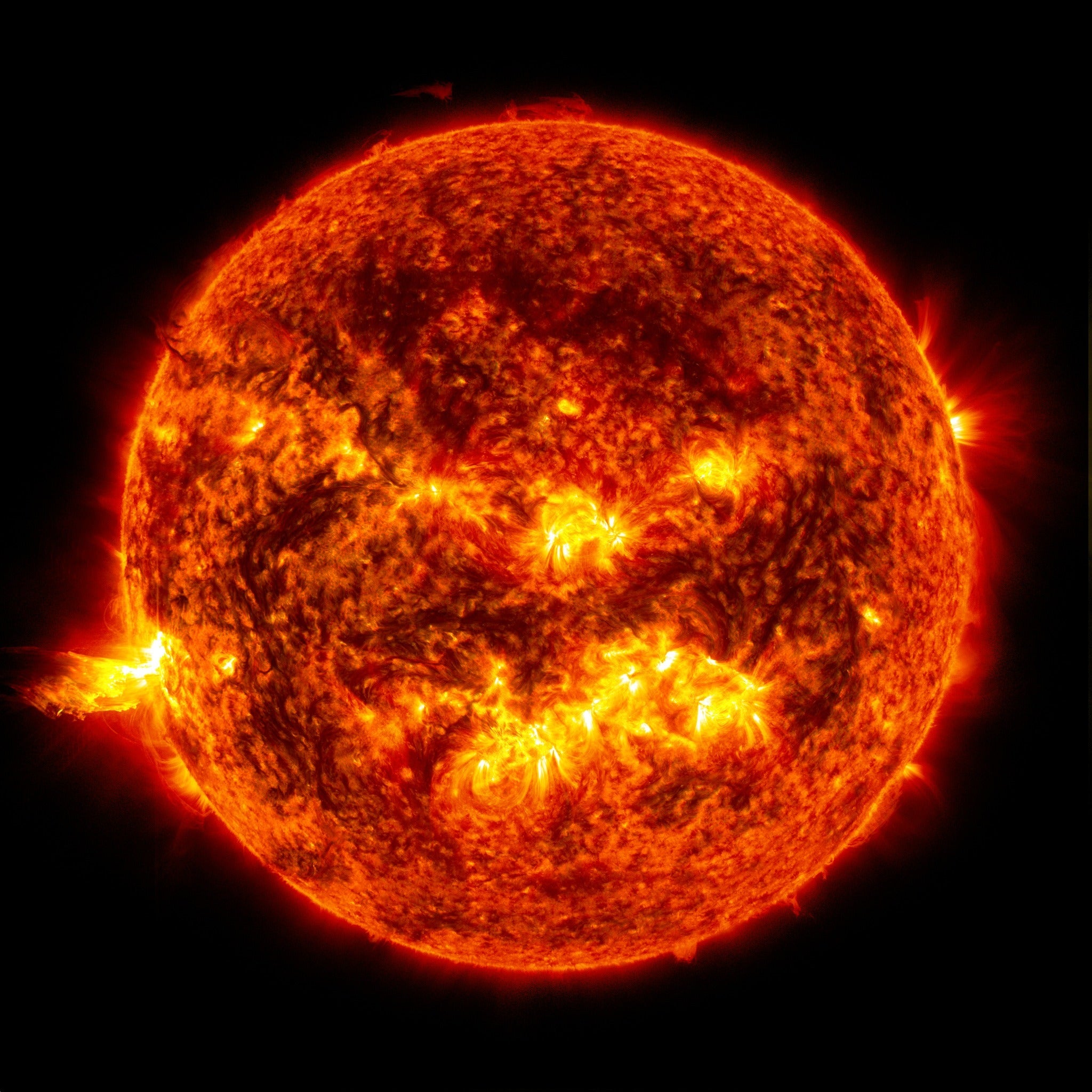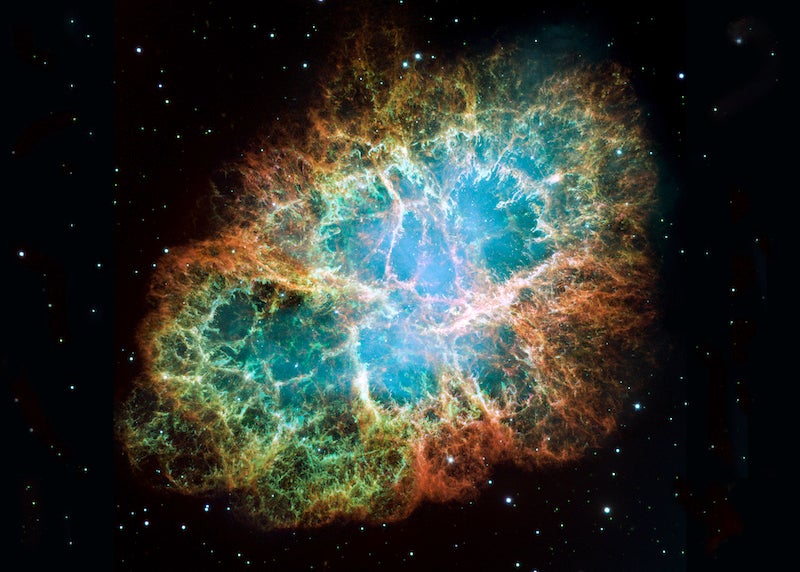Neutron stars, the remnants of stars that exploded as supernovae, often have magnetic fields a trillion times stronger than Earth’s. Paired neutron stars emit gravitational radiation as they orbit and gradually spiral together. Astronomers are confident this scenario results in some short gamma-ray bursts, but details remain murky. Many scientists believe strong magnetic fields play a role.
“We have managed to simulate, for the first time, what happens to the magnetic field when neutron stars collide, and it seems possible that the magnetic field produced could be sufficient to spark the creation of gamma-ray bursts,” says Price. “Until now, no one has shown how fields of the required intensity could be created.”
“It has taken us months of nearly day-and-night programming to get this project running,” Rosswog explains. “Just to calculate a few milliseconds of a single collision takes several weeks on a supercomputer.”
The astronomers found the neutron stars’ existing magnetic fields amplify some 2,000 times in the instant the stars merge. This is long before the collapse can proceed to its likely final state — a black hole. “What really surprised us was just how fast these tremendous fields are generated — within one or two milliseconds after the stars hit each other,” Price says.
“Even more incredible is that the magnetic-field strengths reached in the simulations are just lower limits on the strengths that may actually be produced in nature,” Rosswog adds.
The astronomers reported their work in the May 5, 2006, issue of Science.










